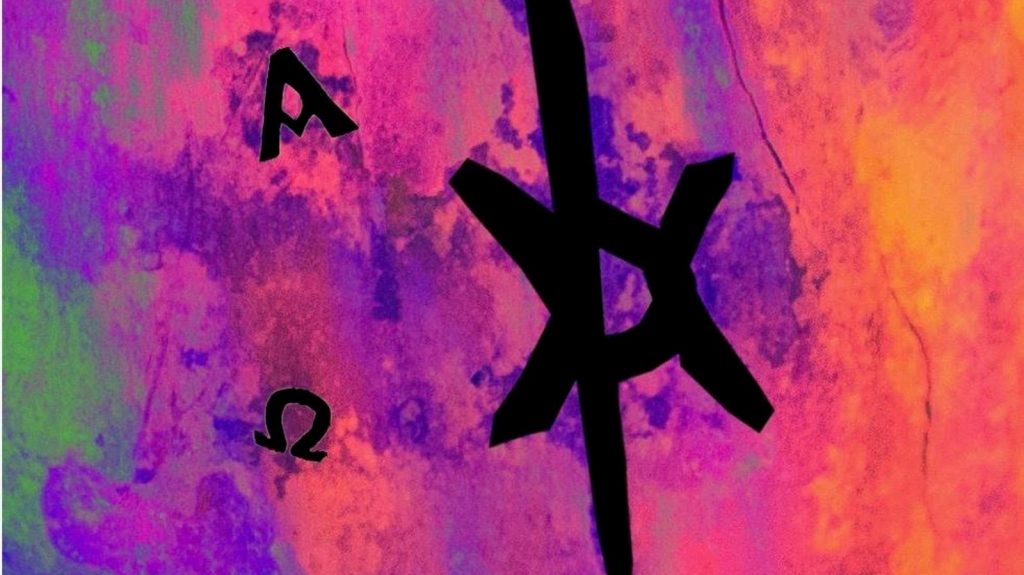Scientists investigating mummified human remains from a cemetery in Sudan recently made a fascinating find: a “Christ” tattoo they say marks only the second evidence of tattooing in medieval Nubia.
The tattoo depicts a Christogram, a symbol that forms an abbreviation of Jesus Christ’s name. The first and last letters of the Greek alphabet, alpha and omega, can be seen near the monogram and signify the Christian belief that god represents the beginning and end of everything.
Radiocarbon dating indicates that the tattooed person—likely a male, the researchers say—lived between 667 and 774, when Christianity reigned in the region. The scientists concluded he was probably between 35 and 50 at the time of death and stood about 5 feet, 4 inches.
His bones came from Ghazali, one of the best-preserved archaeological sites in Sudan and location of a medieval Christian monastery that operated between the 7th and 13th centuries. The area also contains four ancient cemeteries, one of which yielded the bone with the tattooed foot. Ghazili is situated in the Bayuda Desert in Sudan’s north, about 9 miles from the Nile River, where the arid climate favors skeletal preservation, but makes intact soft tissue a highly unusual find.
Indeed, the remains of the tattooed man the scientists nicknamed “Ghz-1-002” were almost entirely skeletal, with the stunning exception of both feet.
“It is remarkable as no human intervention was taken to preserve the remains, yet through natural mummification, what soft tissue survived had the tattoo,” Kari Guilbault, a doctoral candidate in anthropology at Purdue University in Indiana, said in an email interview. She’s part of an ongoing archaeological investigation of Ghazali discoveries led by bioarchaeologist Robert J. Stark from the Polish Centre of Mediterranean Archaeology at University of Warsaw.
Christograms abbreviate Christ’s name in various ways. The tattoo discovered in Sudan displays one of the oldest, most well-known variations, the Chi Rho, a symbol Roman emperor Constantine, who ruled in the fourth century, ordered painted on his soldiers’ shields to protect troops and lead them to victory.
The emblem combines the Greek capital letters chi (X) and rho (P), with a vertical P running through the center of the X to merge the first two letters of the Greek word for christos, meaning Christ. The symbol appears in modern churches and Christian art around the world. A Google Image search shows plenty of 21st century tattoos feature it as well.
Today, Nubia is split between Egypt and Sudan. Visitors to the British Museum in 2014 went up close with another tattoo from Ghz-1-002’s time and place, a monogram of Saint Michael on a woman’s inner thigh. A small number of tattoos have been found across Nubia from earlier, around four thousand years ago. Those markings, however, are more abstract than the clearly decipherable symbol atop Ghz-1-002’s right foot.
“The early individuals are female and bear dot-and-dash geometric designs and botanical motifs,” Guilbault said.
A serendipitous sighting
As for Ghz-1-002’s tattoo, the orientation suggests it was a private marking, possibly part of a spiritual journey, Stark told The Daily Mail.
But while cemeteries near the monastery in northern Sudan house remains including those of monks, archaeologists don’t think Ghz-1-002 was one himself. His bones came from a cemetery located west of the Ghazali Monastery walls that’s believed to have been used by local communities, possibly for ad sanctos burials, which placed the dead close to the tombs of saints and other holy sites in hopes their souls would derive spiritual benefits.
A Polish-Sudanese archaeological team recovered Ghz-1-002’s bones in 2016, but Guilbault stumbled upon the tattoo in September while studying the Ghazali collection using full-spectrum infrared photography and images digitally enhanced with specialized editing software.
“As I unwrapped the right leg from its protective wrapping, I immediately saw a dark, very straight mark on the center of the foot,” said Guilbault, who researches ancient skeletons to gain insight into the lives and health of our predecessors. “Having investigated tattoos before this, I presumed it was a tattoo. However, it was only after post-processing that it was confirmed.”
For now, Ghz-1-002’s tattoo presents more mysteries than revelations, including who inked it and how. Mummification causes the skin to shrink and wrinkle, making further analysis of the marking difficult, and chemical analysis would destroy at least part of the tattoo, Guilbault noted.
Still, no matter how or why Ghz-1-002 got tattooed, one thing is certain. A 1,300-year-old tat is quite a sight.
Read the full article here










